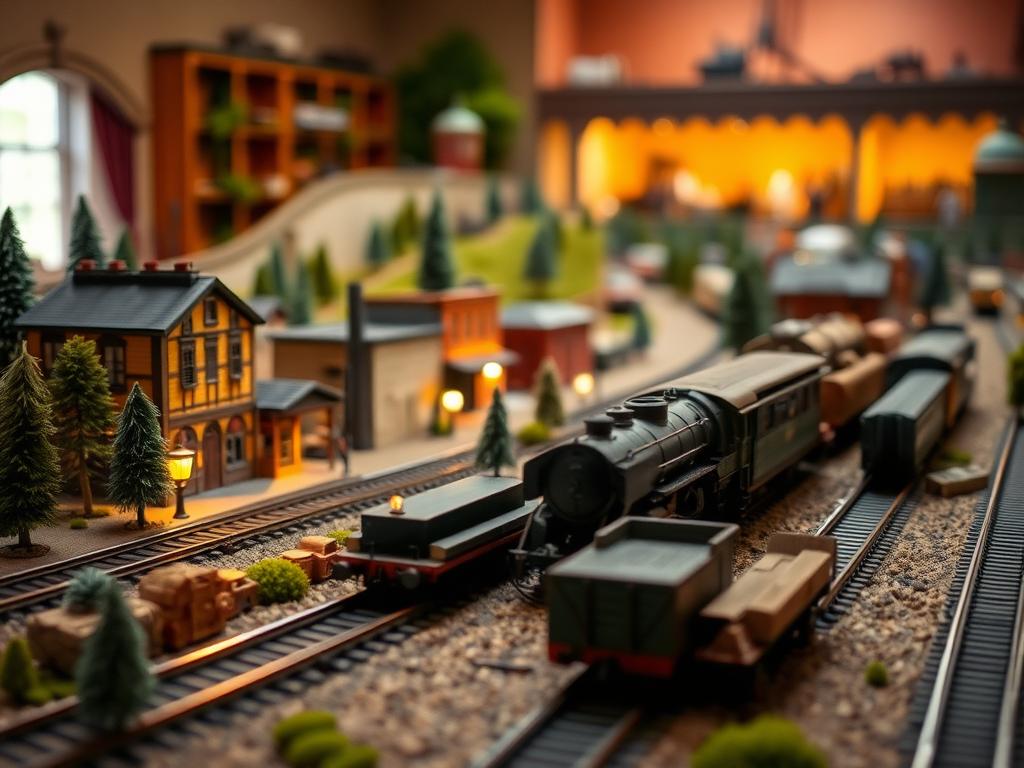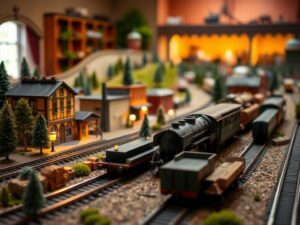
Understanding Scale and Gauge in Model Railroading
Understanding Scale and Gauge in Model Railroading
Welcome to the exciting world of model railroading! If you’re just starting your journey, you’ll quickly encounter two fundamental terms: scale and gauge. These seemingly simple concepts are crucial to choosing the right trains and track for your layout. Understanding the difference between scale vs. gauge model trains is like understanding the blueprints before building your dream home; it lays the foundation for a truly enjoyable hobby.
Let’s dive in!
Scale: Capturing Realism in Miniature
Think of scale as the size comparison between your model train and its full-size counterpart. It tells us how much smaller your model is, expressed as a ratio.
The most common scale in model railroading is HO scale, with a ratio of 1:87. This means that every inch on your track represents approximately 8.7 inches in real life. Popular alternatives include N Scale (1:160), O Scale (1:48), and G Scale (1:22.5). Each scale offers different advantages depending on the size of your layout, detail preference, and personal style.
- HO Scale:
- Offers a great balance between realism, track space requirements, and cost.
- Plenty of readily available rolling stock and accessories.
- Versatile enough to accommodate intricate layouts and simple beginner designs.
- N Scale:
- Smaller than HO scale, perfect for compact spaces or creating expansive, detailed layouts with minimal footprint.
- Requires a finer level of attention to detail due to the smaller size, which can be a fun challenge!
- Limited in available rolling stock and accessories compared to HO scale.
- O Scale:
- The larger size allows for impressive realism, intricate details, and easily assembled track.
- Requires significantly more space compared to HO or N scale.
- Fewer model options compared to the popular HO scale.
- G Scale:
- The largest commercially available scale, designed for outdoor layouts or larger indoor spaces.
- Ideal for a more visually striking experience due to the sheer size of the trains and scenery.
Gauge: Defining Track Width
Now that you’ve grasped scale, let’s talk gauge. This refers to the distance between the rails of your track. Just like real trains use different gauges depending on their environment, model railroads utilize specific gauges too.
HO scale almost exclusively uses 16.5mm gauge, meaning there is 16.5 millimeters of space between the inner edges of the rails. While other scales like N Scale have similar track systems (9mm), Gauge matters in deciding which rolling stock can run smoothly on your layout. Trying to place an HO scale train on an O Scale track would be like trying to fit a car onto a horse and cart â it simply wouldn’t work!
Understanding the Relationship: Scale vs Gauge in Model Trains
Scale tells you the size of the model, while gauge dictates how the track is laid. Think of them as partners:
- You choose your scale (HO scale in our case) to determine the overall size and detail level of your trains.
- Within your chosen scale (HO scale), you stick with the standardized gauge (16.5mm).
Trying to use an O Scale track with HO scale trains would lead to derailments and disappointment. Always ensure that your trains are designed for the gauge of track you choose!
Choosing Your Ideal Set Up:
Understanding scale vs gauge model trains allows you to build the perfect setup. If you’re starting with HO scale, you have a vast world at your fingertips:
- Start Small: A basic HO starter set with track and a locomotive is an excellent way to get started and familiarize yourself with operating a model railroad.
- Expand Gradually: Add rolling stock like cars and passenger units based on the era and type of train operation you envision.
- Consider your Space: HO scale is relatively adaptable, but remember to consider your available space for a complete layout.
- Dive into Detailing: From scenery and structures to custom paint jobs, there are endless ways to personalize your HO scale model railroad and make it truly your own!
Join the Model Railroad Community!
Remember, you’re not alone in this exciting journey. Reach out to fellow enthusiasts online or at your local hobby shop.
We can learn from each other, share tips, and create a supportive community where passion for model trains thrives!
Ready to begin building your own miniature world? I hope this guide helped you navigate the essential difference between scale vs. gauge model trains. Happy modeling!








